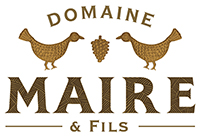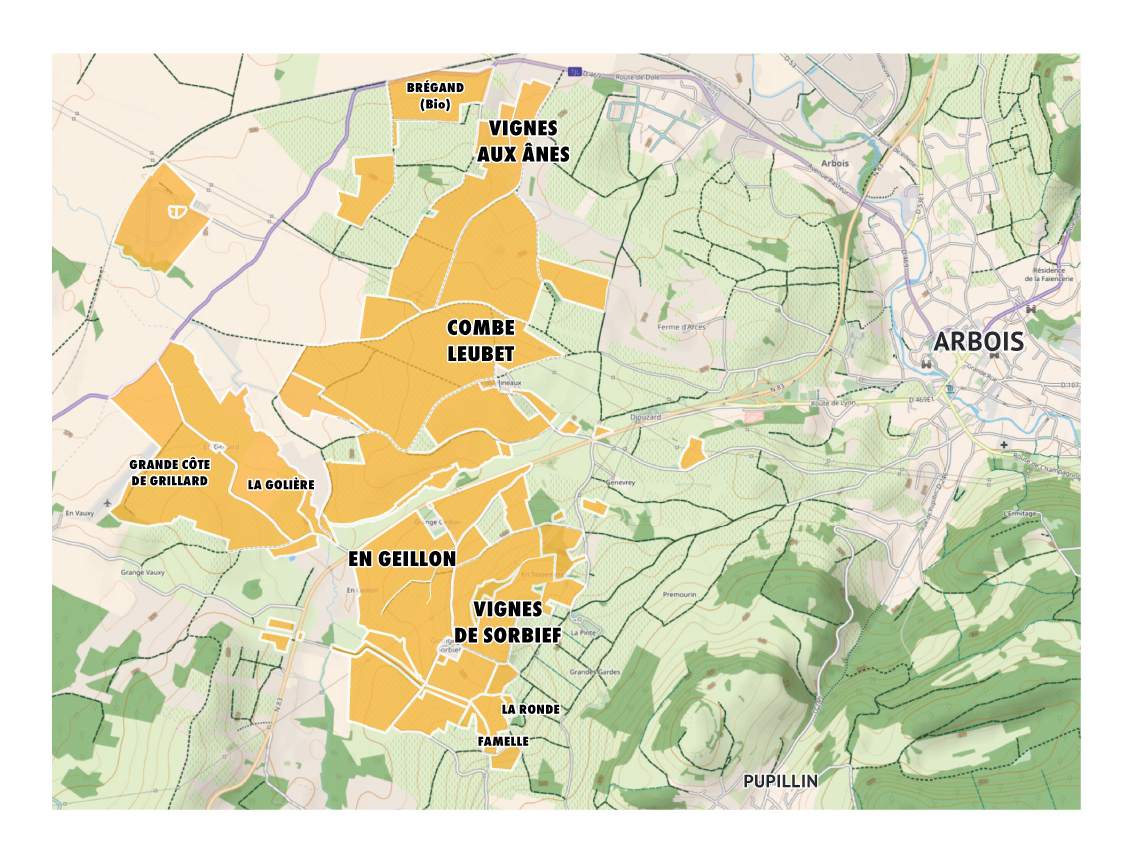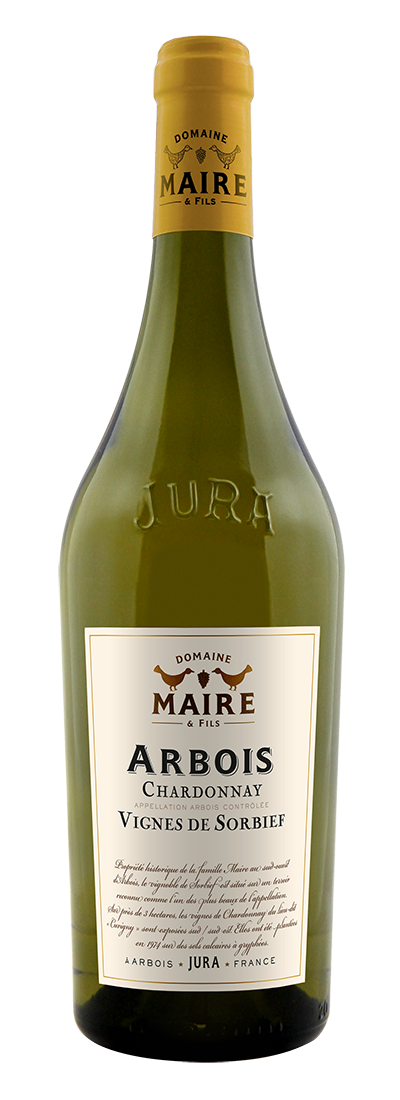ARBOIS CHARDONNAY VIGNES DE SORBIEF 2018

Its great adaptability makes it the most prominent grape variety in the area today, as well as in the Domaine Maire’s vineyards.
- A clear and brilliant gold colour, with green and pale gold reflections.
- A complex nose revealing finesse, roundness and minerality.
- In the mouth its attack is frank and opens on floral notes and dried fruit followed by a good amplitude and a very long persistence.
Serve slightly fresh between 12° and 14°C (53-57°F) with fine fish, shellfish and crustaceans, white meats such as veal or poultry, and local cheese such as Comté or Swiss cheese.
5 to 6 years.
The Arbois AOC is the oldest and largest of the Jura's four geographic AOCs. In particular, it was France's first AOC (created in 1937).
Its name originates in the Celtic words "ar" and "bois" that would mean "fertile land".
- Surface: 2,85 Ha
- South and southeast exposure
- Average age of vines : 50 years (1974)
- Soils: marls and limestones with fossil shells.
The work in the vines, is based on the respect of the nature and the soil. We practice soil reassembly to aerate the lands subjected to settlement due to moisture, and grass with plants. Such as clover, which, by competing on the vine, can modulate its mineral and water supply and control its vigour and yield.
The Guyot double size is necessary for the Chardonnay to better control its performance.
Reception of the grapes, harvested manually, sorting and vatting by gravity into a thermo-regulated tank for the fermentation.
Once the grapes are pressed, the musts are settling under control temperature. The fermentation is then maintained at low temperature (20- 22°C / 68-72 °F).
Ageing in oak barrels for 9 months (including 30% new oak barrels).
Bottling is scheduled in spring with a light filtration.
2018: An exceptional vintage!
There are vintages that make a mark on a whole region, and the 2018 will no doubt be one of these. Harvesting began on 20 August with the Crémants. They lasted for a month and the weather was perfect and quality exceptional. The grapes were in perfect health and had reached optimum ripeness.
The end of the winter was very cold with intense episodes of frost, which prolonged the dormancy of the vines. Bud-burst was later than usual but there were no spring frosts. The spring was very hot, with rain and frequent storms. There was even some hail, but fortunately, the estate’s vines were spared.
Summer was hot and dry, as it was across France, even on the vine-growing plateaus of the Jura, which are usually cooler.
Conditions were perfect for sunny harvesting. Apart from the Savagnin varietal, which is more sensitive, and suffered a little from the intense heat, the harvest was abundant and very high in quality.


